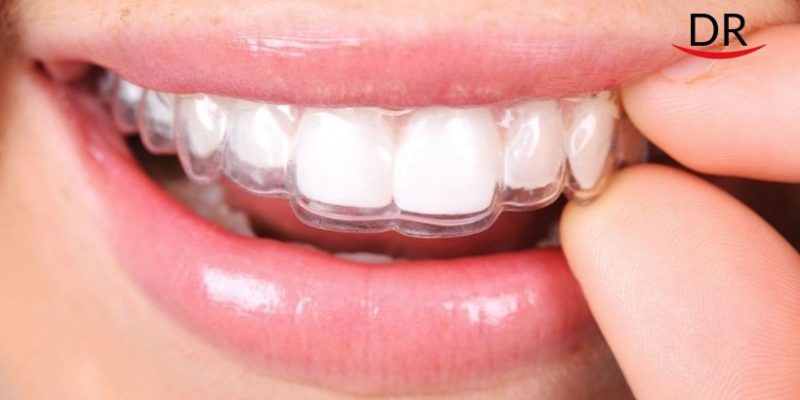Introduction
Modern orthodontic practices have evolved considerably over the last 20 years. Back then, tooth extractions for orthodontic treatment were all too frequent and large, traditional one-size-fits-all brackets and wires were the standard of care.
Over the decades, braces have gone through several iterations. Believe it or not, they were once made of gold! This eventually led to ceramic braces, currently still very popular, which were less noticeable from a distance. Years later, this treatment and procedure experienced a true revolution with clear and removable aligners, allowing people to eat and drink whatever they want without disrupting treatment.
Invisible orthodontics encompasses clear aligners, such as the highly popular Invisalign and different aligner brands, as well as ceramic, clear and lingual brackets. The more attractive option from the patients’ perspective is a clear aligner: the appeal is that nothing is attached, they can be removed at any time, they are easy to clean and they are virtually invisible when worn.
Here are the top advances in orthodontic technology:
Digital X-rays and 3D Dental Imaging
The introduction of cone beam CT scanning to the practice of orthodontics is revolutionizing the diagnosis and treatment planning for today’s patients. These three-dimensional images of the entire skull, jaw, and underlying bone structure provide a much clearer picture of the complete dentition and other structures, and reveal much greater detail about the patient’s symptoms. The ability to manipulate and view these images from any angle is an incredibly powerful tool in treatment planning and evaluation — much better than the hazy, two-dimensional shadows we get from conventional X-rays.
CBCT allows orthodontists to view and manipulate detailed 3-D images of a patient’s teeth, skull, jaw and oral bone structure. The result is a more precise diagnosis, an ability to pinpoint specific oral issues and to devise a treatment plan with less ambiguity.


iTero Scanner for Digital Impressions
The iTero Element is the most advanced scanner on the market today. It allows dental professionals an unprecedented insight into a patient’s oral health and a way to openly discuss treatment options.
Patients love this scanner as it provides a comfortable in-chair experience, and allows them to visually understand their oral issues and what results could look like. It demystifies the pain they might be experiencing and quells concerns about the recommended course of action.
This is an interesting development because it’s not only cutting-edge, but it creates a better and more open relationship between the dental professional and patient through visualization. Being able to see exactly what the end result of your treatment will be, BEFORE you make any commitment, eliminates the uncertainty.


The transition to a digital protocol does not mean only new opportunities for the doctor, but also an increase in interest from clients who are experiencing the benefits of technological progress.
Invisible Aligners
Invisalign braces has also changed the face of orthodontic care. When metal braces were your only options, you were forced to deal with a mouth full of metal and wires for long periods of time. This can be really hard, especially for tweens and teens, who focus a lot on their appearance. Concerns about how braces make you look now is not as big of a problem because of innovative technologies like Invisalign.


Unlike metal braces, Invisalign clear braces are almost invisible inside your mouth. People will really need to look inside your mouth to notice them compared to the blaring glare of metal that comes with more conventional braces!
When switching to the use of new equipment, one of the first barriers for many doctors is the financial side. New tools seem to be unavailable due to the high cost, since it is believed that patients are more attracted to inexpensive treatment. However, the example of Artur Aliyev confirms that this should not be feared. The doctor recently became an Invisalign Certified Physician and achieved Silver status in four months. According to the doctor, it was not difficult to attract patients for treatment using aligners: they themselves were really interested in new methods of bite correction.
“Our system is now built in such a way that the difference in cost between braces and aligners is insignificant,” said Artur Aliyev. However, as the doctor noted, when correcting a bite with the help of braces, the patient faces more difficulties: for example, professional oral hygiene must be done every three months. In addition, “During orthodontic treatment, especially in patients with weak enamel, there are moments associated with demineralization, the appearance of white spots on the teeth, or even caries,” added Dr. Aliyev. Correcting bite with the help of Invisalign aligners does not require additional efforts from patients associated with hygiene procedures – it is enough to brush your teeth and rinse the aligner after each meal.
According to this specialist, in Yekaterinburg they are rather skeptical about new types of dental treatment, since most patients are not familiar with the functionality and capabilities of Invisalign aligners, which provide a more comfortable smile correction, and the use of Smart technologies in the production of aligners contributes to predictability and accurate predictability of results. treatment. For example, SmartForce elements, including standard and optimized attachments (special attachments on aligners) and SmartStage technology, optimize the planning of tooth movements. In addition, the bite correction process is based on modern protocols based on the analysis of data from 9 million patients.
Explaining the benefits of digital treatment gives the result: " The cost increases slightly, and the benefits of Invisalign aligners are still significantly outweighed in comparison with traditional methods of bite correction … Those patients whom I offered aligners are happy with the result and happy that they did not have braces."
The transition to a digital protocol was especially important in the context of a pandemic. Many doctors found themselves in a non-standard situation, and it was not always possible to continue treatment under normal conditions. It was difficult for patients with traditional braces. Patients were admitted only in emergency cases, for example, when the bracket came off and injured the oral cavity. With Invisalign aligners, the bite correction process did not stop, thanks to the digital format of work.
“If patients run out of aligners, they can come to the clinic and get the next one. The assistant will take pictures of everything, and I am collecting a short history: are the aligners holding up normally, are there any questions or complaints. If everything is normal, then they will be given the next set,” said Dr.Satendra. In a pandemic, the digital work format was more relevant than ever.
Dentistry is developing, and modern technologies are bringing about qualitative changes in the industry. It can be definitely noted that such modern bite correction methods provide time savings for doctors and patients, greater accuracy and predictability of results, and convenience and clarity of the treatment process.




















Comments